How Singapore police raced against the clock to deal with a bomb which 'could go off at any time'
The Commander of Jurong Police Division details the scale of a seven-day operation around a World War II relic in Upper Bukit Timah, and the sense of urgency that underlined every move.
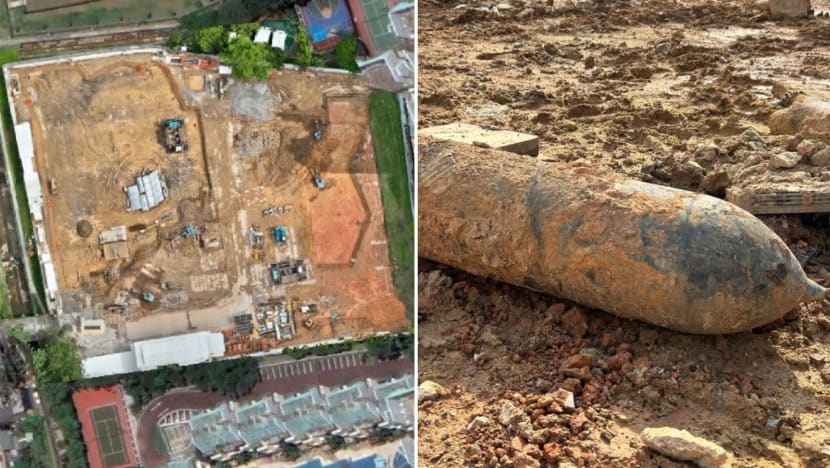
A close-up of a 2D map overlay created by a Singapore Police Force drone (left) and the World War II aerial bomb found at a construction site along Upper Bukit Timah Road. (Images: SPF)
SINGAPORE: The discovery of a World War II bomb in Upper Bukit Timah in September triggered an operation on a scale which Assistant Commissioner (AC) of Police Jerald Tan Jin Rui had never experienced before.
Over six ensuing days, more than 500 Singapore Police Force (SPF) officers were activated - some even recalled from off days or leave - to plan and execute the safe disposal of a 100kg explosive surrounded by residences, businesses and even a school.
The stakes were high – and the consequences should the bomb go off with authorities unprepared, unthinkable.
These thoughts were foremost in AC Tan's mind as the Commander of the Jurong Police Division raced against the clock to coordinate among multiple government agencies, the army, his own men and over 4,000 affected people, ahead of a controlled detonation at the construction site where the bomb was found.
Taking stock of the event weeks later in an interview with media on Wed (Oct 11), AC Tan said: "Usually for major security operations, we have quite a fair amount of time – weeks, months even to plan.
"This one, that the serious nature of the ordnance is that it could go off really any time, meant that there was a really a compressed timeline that we were working with."
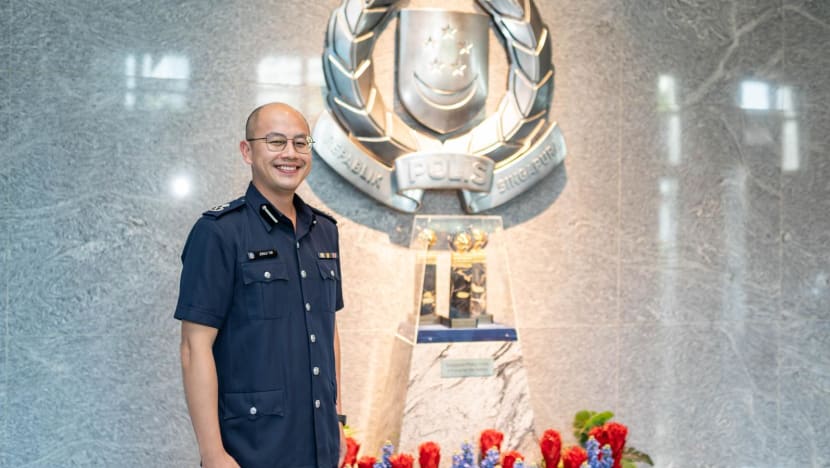
This was also a task unfamiliar to police officers more accustomed to grappling with day-to-day security issues.
But they pulled it off, with the war relic successfully destroyed in two controlled detonations on Sep 26, and with zero casualties and slight damage to surrounding buildings.
For AC Tan, who had only assumed command of Jurong Police Division on Aug 29 last year, the event ranks as a career highlight in his 18 years of service.
THOUSANDS OF MOVING PARTS
The bomb was discovered on Sep 20 at the construction site for the upcoming Myst condominium. Explosive experts from the Singapore Armed Forces determined that the bomb had to be detonated onsite.
SPF's then deployed a drone to map out the affected area and its immediate surroundings.
The authorities assessed that all residents and businesses within a 200m radius had to be evacuated. These amounted to thousands of individuals from condominiums The Linear, Hazel Park, Bukit 828 and Hazel Park Terrace; housing block 154 at Gangsa Road; shophouses along Upper Bukit Timah Road; and Greenridge Secondary School.
Traffic also had to be diverted from Upper Bukit Timah Road while the operation was carried out.
"Certainly the thing that was foremost on my mind was that the ordnance would ... go off before we could conduct the evacuation," said AC Tan.
"And so that really drove home the urgency and the seriousness of the operation to all our officers, and that's something that we tried to communicate as best we could to the residents."
Officers were dispatched to invite affected people to townhall sessions on Sep 24, where they were told what to expect.
"A lot of the residents, this is something very new for them, not something they will encounter on a day-to-day basis," said AC Tan.
"So it probably took quite (some) effort by our officers to engage them, convince them of the seriousness of the matter that they had to evacuate because, frankly, this sort of thing doesn't happen often in Singapore."
Those who missed the townhall were approached by police through door-to-door visits.
In a twist, officers found their outreach efforts slightly hampered by heightened attention to scams: Some sceptical residents believed the police notices were a fraud.
"Indeed, there were a number of calls to 999, to Bukit Panjang Neighbourhood Police Centre about whether this is a legitimate notice, and I got a few from concerned friends and family as well," said AC Tan.
"That's a good thing because we know we've been educating the public on scams and telling everyone to be mindful and vigilant and not trusting immediately everything that you see."
New drone mapping technology used
The unmanned aerial vehicle (UAV) deployed by the SPF was operated by a team led by Superintendent (SUPT) of Police Sum Tuck Meng. It was the first time drone mapping technology was used for an operation.
While the drone has been in operation for two years, the mapping camera - used to take high resolution images of the construction zone - was newly retrofitted.
The drone was used ahead of detonation day to provide an updated aerial view of the bomb site, said SUPT Sum, who is head of UAV operations and training at Home Team UAV Command.
This is because satellite images that were publicly available would have been outdated and shown a now-demolished building standing where the construction site is.
The drone's mapping camera took 150 high resolution photos from a top down-perspective, within a flight time of six minutes.
Software then stitched the images together to give an updated 2D map overlaying normal street satellite imagery, within the span of a few minutes.
Zooming in, the police were then able to see terrain details of the excavation site.
"We essentially blow up the whole map and then we examine the little nitty-gritty features of where the different things are positioned," said AC Tan.
"Certainly drawing the 200m radius is one, but (also) identifying points of entry or exit not just for ourselves but our SAF colleagues who will be moving around the site."
Officers also used the map to determine who might be exposed to the impact of the detonation, as well as the route that SAF personnel carrying the bomb would take, among other details.
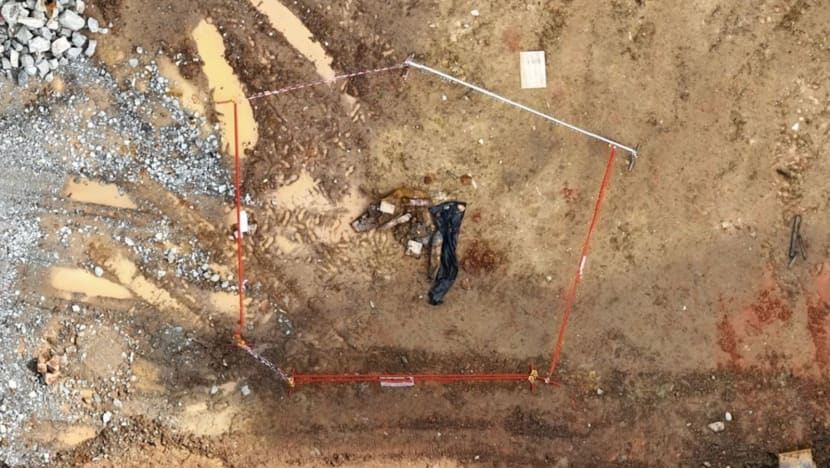
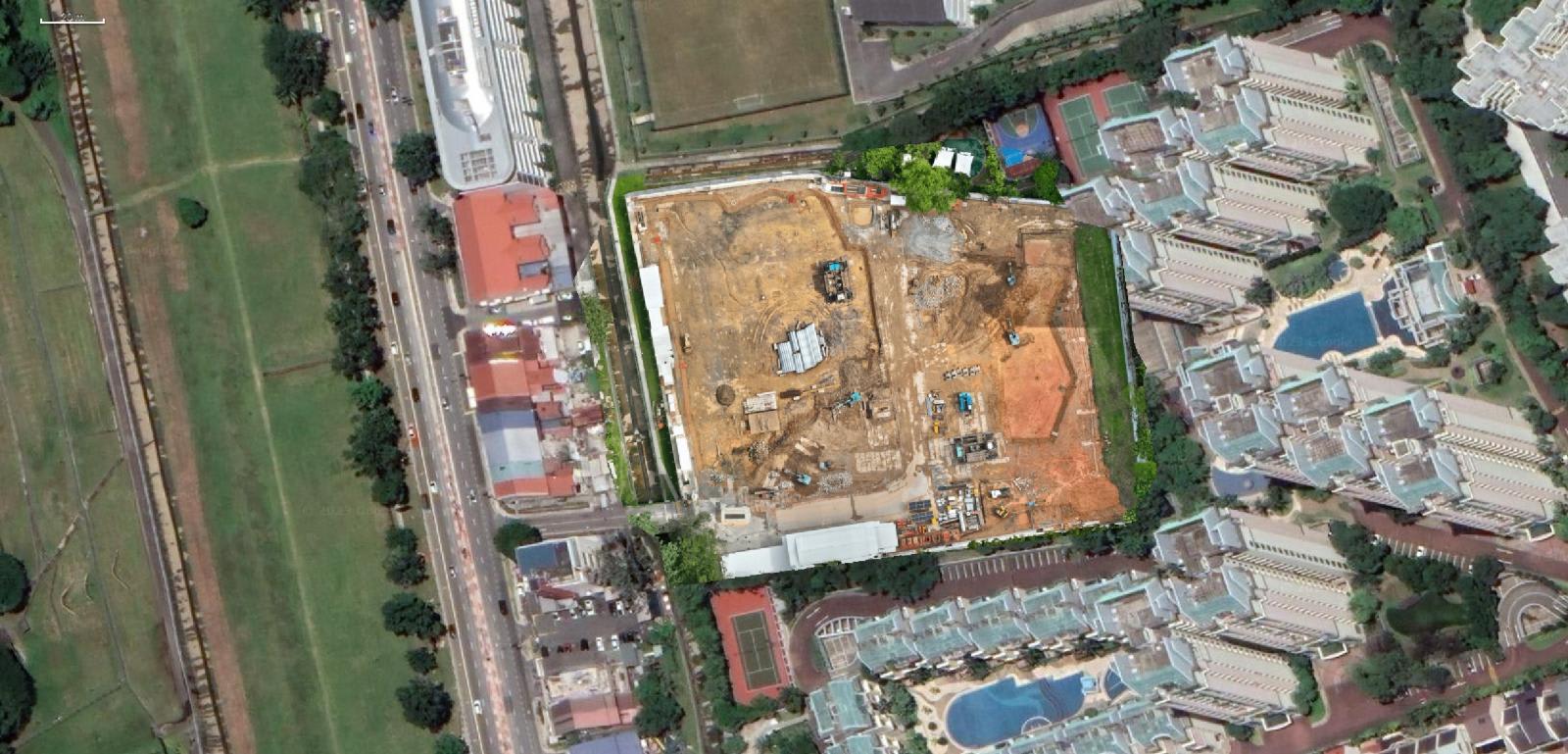
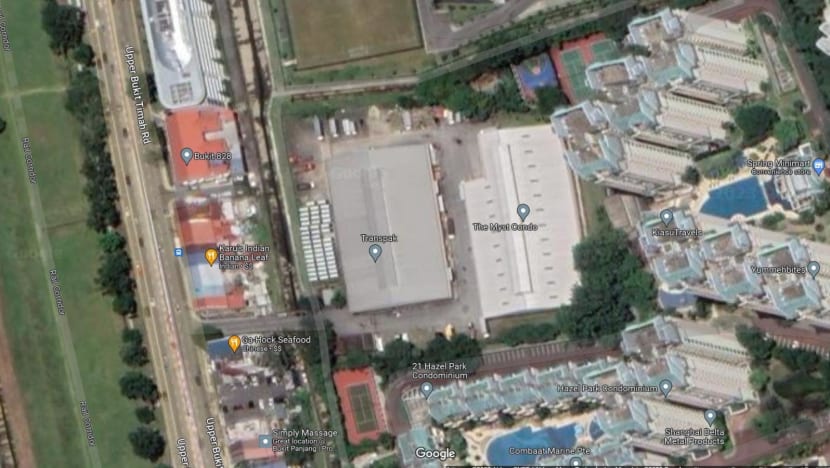
"WOW THIS IS REAL"
On detonation day, more than 300 officers were deployed to ensure everything went smoothly, from evacuations to post-blast checks.
AC Tan was in a command post just outside the 200m cordon, monitoring the operation. His team watched as the bomb was moved several metres to its designated detonation spot in the centre of an array of cement blocks.
When the first blast went off at about 12.30pm, the team was surprised by the extent of the impact, including the vibrations they experienced.
"I think it was at that point in time equal parts terrifying and exhilarating. Like 'wow', this is real," said AC Tan.
"That's a real bomb and it could have gone off and we're thankful that we did all this work to make sure that it was detonated safely."
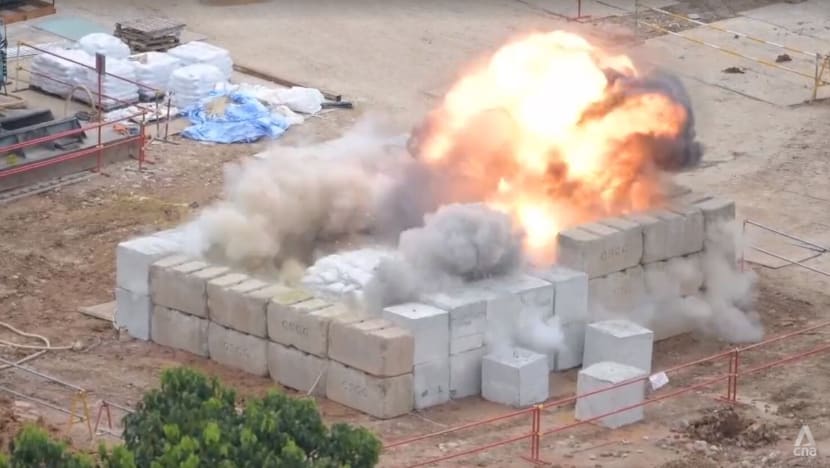
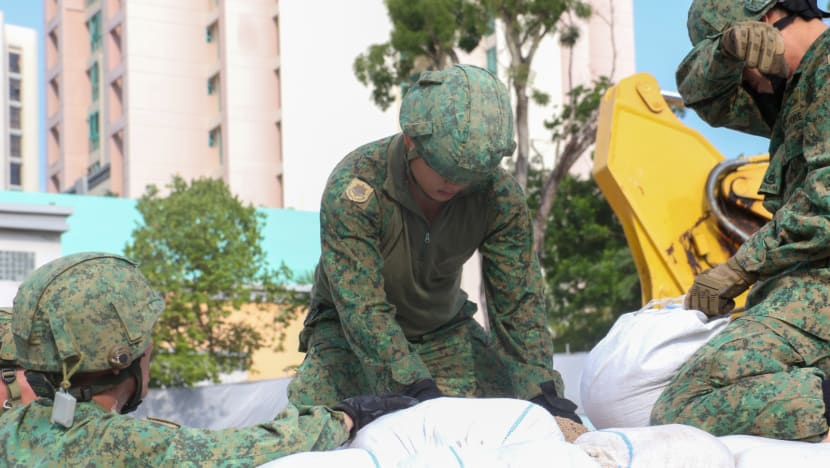
While the police were worried about a prolonged operation, contingency plans were made for such a situation which, thankfully, did not come to pass, said AC Tan.
After a second blast around 1.45pm, police confirmed the war relic's successful disposal.
"This thing ... is loud, we could feel, but it was contained. And visibly we didn't see any windows breaking or things falling off," said AC Tan. "That first cut of visual confirmation gave us a sense ... that at least this thing has gone fairly according to plan."
RELIEF AND PRIDE
Even then, the police could not relax. They needed to facilitate infrastructure inspections by agencies such as the Building and Construction Authority, with the goal of resuming normalcy for affected residents and businesses.
The process took more than three hours, with those trying to enter restricted areas turned away.
The all-clear was only given at about 5.10pm, with residents then allowed to return home and barricades removed. Most were relieved to find their property untouched.
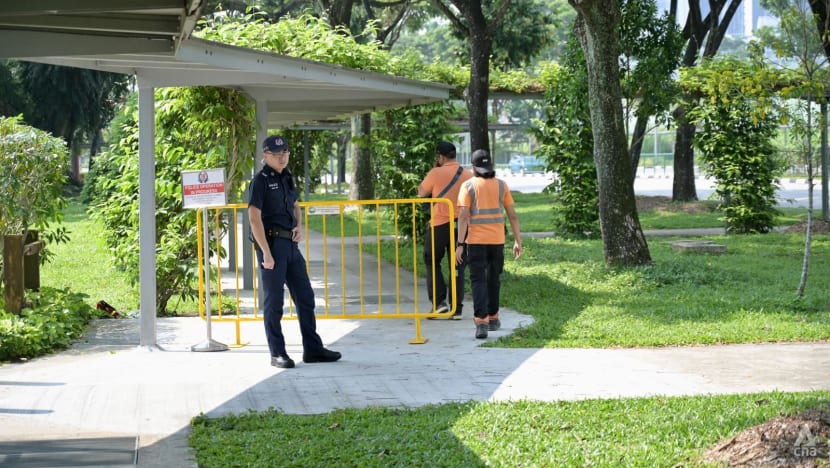
"I think I can safely speak for all of us in the command post that there was a huge sense of relief that the item was detonated, the relic was detonated safely and without harm to any human life and without extensive damage to property and infrastructure that we had feared might be possible," said AC Tan.
"Once everything was safe and people could go back, then I think the emotion that I felt the most was a sense of pride.
"I think that was something that really was unprecedented in Jurong Division's history. Something that we've not had to do before," he added.
"So I was really proud of our officers for rising to the occasion, remaining calm under the pressure and being resilient and able to deliver a good, safe outcome for residents."

















